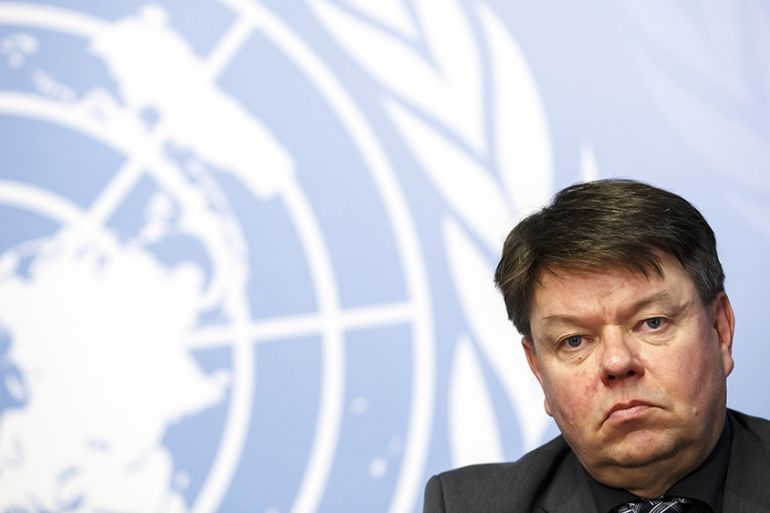Deadliest storms of all time identified by WMO
World Meteorological Organization lists all-time deadliest storms in attempt to highlight need for weather preparedness.

The World Meteorological Organization (WMO) has released a definitive list of the deadliest historical weather events of all time in an attempt to highlight the need to improve warnings of impending weather hazards.
The list by the top UN weather agency will also help learn lessons from previous natural disasters.
Keep reading
list of 4 itemsAfter the Hurricane
World’s coral reefs face global bleaching crisis
Why is Germany maintaining economic ties with China?
Secretary-General Petteri Taalas said, “The human aspect inherent in extreme events should never be lost.”
The WMO listed the following deadly events of the past several decades:
The deadliest tropical cyclone was in Bangladesh (then part of East Pakistan) on November 12-13 in 1970. The ‘Great Bhola Cyclone” killed between 300,000-500,000 people mostly because of a storm surge, which inundated the low-lying islands and tidal flats along the shores of the Bay of Bengal sea.
The deadliest tornado hit the Manikganj region of Bangladesh, just to the west of the capital, Dhaka, on April 26, 1989, destroying two towns. The WMO committee estimated a death toll of 1,300 in the tornado.
The Indian sub-continent was also the venue of the deadliest hailstorm ever recorded. It struck Moradabad, India on April 30, 1888. As many as 246 people were reported killed. Hailstones were described as being as large as goose eggs, oranges and cricket balls.
The deadliest direct lightning strike claimed the lives of 21 people in Eastern Rhodesia (now Zimbabwe) on December 23, 1975.
The WMO pointed out that approximately 90 percent of dwellings in sub-Saharan Africa are not legally safe. Many schools and homes are constructed with mud-brick with thatch or metal roof sheets held down by rocks. It is interesting to note that all the events listed above are “historical”.
In recent years death tolls from severe weather have fallen.
Primarily, this is a result of improved weather forecasting, both in terms of accuracy, and the time ahead in which they can be predicted.
Communication has also improved in so many ways. Road infrastructure and access to cars and trains allow authorities to act upon weather forecasts and evacuate hundreds of thousands, or even millions, of people before a tropical cyclone hits.
Mobile telephones and social media allow for much faster dissemination of information about severe weather.
Despite this, the WMO is acutely aware of the risks still posed by severe weather in the 21st century. Tropical Cyclone Haiyan, which swept across the central Philippines in November 2013, produced a massive storm surge, which was largely responsible for the death of 6,340 people, causing damage estimated at $2.86 billion.
“These events highlight the deadly tragedies associated with different types of weather. Detailed knowledge of these historical extremes confirms our continuing responsibilities to not only forecast and monitor weather and climate, but to utilise that information to save lives around the world so disasters of these types are lessened or even eliminated in the future,” said Randall Cerveny, WMO Rapporteur on Climate and Weather Extremes.